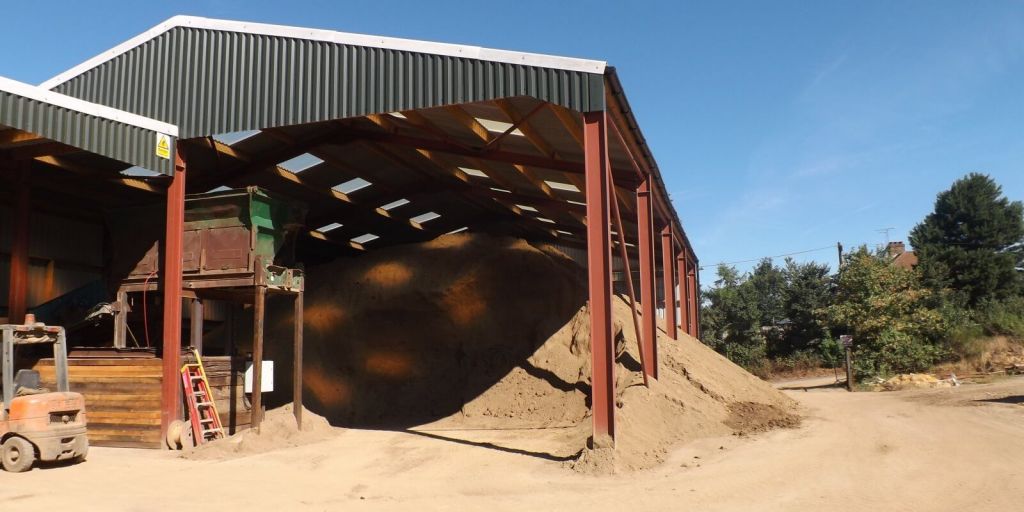Cricket loam

Here is a picture of some 1,700 tonnes of prime cricket loam (a.k.a. Surrey loam) ready for bagging at our Sevenoaks depot. It will be processed in our new bagging unit, palletised and sent out to waiting customers all over the Home Counties.
But what on earth (err...) is cricket loam and what makes it so special? The ECB (England and Wales Cricket Board) explains it in their maintenance guidelines document, which is the bible for groundsmen around the country.
Essentially, it is a type of topdressing with around 30% clay content, which is used at the end of the cricket season to repair wear and damage to cricket squares. The clay content ensures suitable and consistent bounce during play. A greater clay content gives higher performance but requires more maintenance, as it will be more liable to drying out and cracking. Therefore, the recommendation tends to be for a clay content of 28-35% for first class cricket, but more like 25-28% for school pitches. Ultimately, it is the soil's "breaking strength" which determines its suitability, and this is dependent not only on clay content, but also on the other components of the loam. The guidelines explain how to test your soil - please refer to them for details.
Most importantly, though, the loam applied must be compatible with the existing soil. If not, it will create layers where the different types of soil dry out (and therefore shrink) at different rates. Such layering affects the bounce, is prone to damage and provides an unsuitable environment for good quality grasses. Again, the guidelines explain how to check soil compatibility.
We have been producing and supplying cricket loam to a high degree of consistency over the last twenty years, and have it tested by the STRI to ensure its quality and suitability. This year's supply is now ready to be shipped. Full details on the Bourne Amenity and Gardenscape websites.

